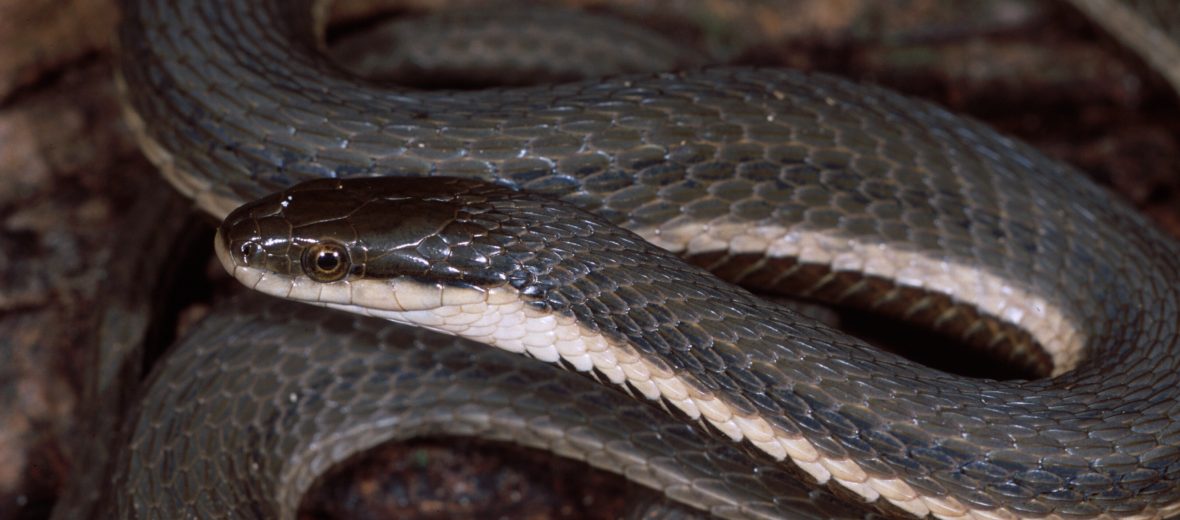
The queen snake can be found in the eastern United States and Canada. These snakes are nonvenomous colubrids that prefer edges of lakes, canals, creeks, ponds, ditches, marshes, agricultural, and urban areas. They are an indicator species as they are found near clean, running water. Their presence is indicative of such. Even though they face the threats of habitat destruction at the hands of agricultural, housing, and urban developments, and suffer at the hands of pollution, they are still listed as Least Concern by the IUCN. Their populations are stable across their range.
First the Stats…
Scientific name: Regina septemvittata
Weight: Up to 12+ ounces
Length: Up to 2 feet
Lifespan: Up to 19 years
Now on to the Facts!
1.) While not typically defensive, these snakes will not hesitate to bite, if mishandled. They will also release a foul smelling musk on perceived threats.
2.) These snakes are sexually dimorphic in that females are substantially larger than males.
3.) Queen snakes are semi-aquatic (spend part of most of their time in or near water).
4.) Their scales are keeled and thus give these snakes a rough look and feel.
5.) While typically diurnal (active during the day), these snakes have exhibited nocturnal (active at night) behaviors.
But wait, there’s more on the queen snake!
6.) They don’t hunt prey via sight or via heat reception. Instead, they hunt via smell. They do this via flicking their tongue out and capturing readings of their surroundings. Then they bring their tongue back into their mouth and run their tongue over their Jacobson’s organ. This is an organ that provides information of the surrounding area to their brain, allowing the snake to determine what is going on around them, and if there is food or foe afoot.
7.) Their first go to, when threatened, is to retreat to the water.
Did you know…?
Queen snakes have multiple common names, such as: banded water snake, olive water snake, pale snake, brown queen snake, diamond-back water snake, leather snake, moon snake, queen water snake, 7-striped water snake, striped water snake, North American seven-banded snake, 3-striped water snake, willow snake, and yellow-bellied snake. Hence why we use scientific names.
8.) During winter, these snakes enter into brumation (hibernation for reptiles) and can be found in larger groups or hibernaculas.
9.) A group of snakes is called a bed, den, knot, nest, or pit.
10.) The queen snake preys on frogs, tadpoles, newts, minnows, snails, fairy shrimp, and freshly molted crayfish.
But wait, there’s still more on the queen snake!
11.) Like many other snakes, they are polygynous (males mate with multiple females).
12.) Being ovoviviparous, females give birth to live young; rather than lay eggs.
Did you know…?
The queen snake is often confused with being a garter snake, as their appearance is very similar.
13.) Females birth up to 20 young, after up to a 120 day gestation (pregnancy).
14.) Snakelets are born precocial (self sufficient) and measure about 6 inches.
15.) Raccoons, minks, otters, hawks, herons, and bullfrogs all prey on either the adults or juveniles.
Now a Short Queen Snake Video!
Be sure to share & comment below! Also, check out the Critter Science YouTube channel. Videos added regularly!
Want to suggest a critter for me to write about? Let me know here.
Photo credit: Eric Stine



